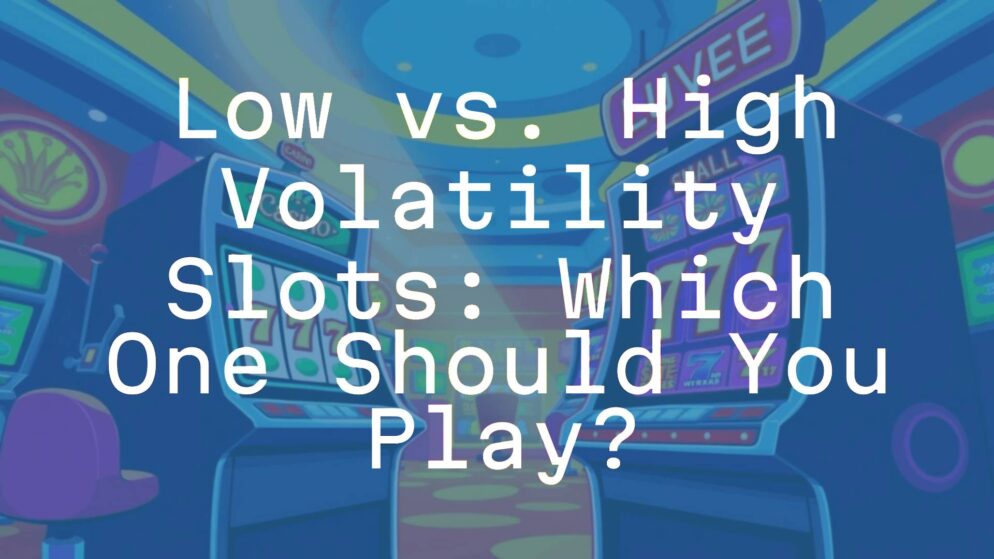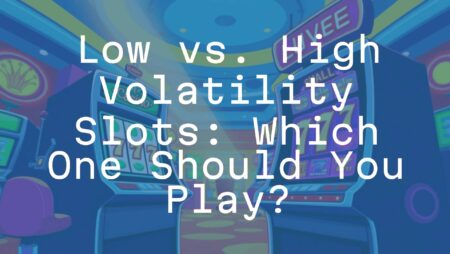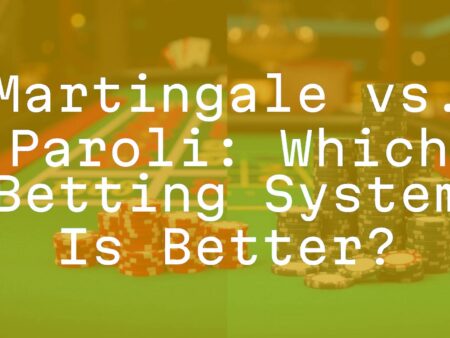

When deciding whether low or high volatility slots are right for you, there isn’t a universal answer. It all depends on how you like to play, how much risk you can handle, and what you expect from your slot gaming. Although many people focus on a slot’s Return to Player (RTP) rate, knowing about volatility is just as important if you want to get the most out of your money and enjoy your time at the slots. Volatility tells you how often you might win and how big those wins usually are, and it can really affect both your gameplay and how you manage your funds.
In short, choosing between low and high volatility slots is about picking between getting smaller, regular wins or waiting for bigger, less frequent prizes. There is no single “right” option; it all comes down to your own tastes and playing style. Understanding the difference can help you find games that suit you best and make your slot play more enjoyable and manageable.

What Is Slot Volatility?
Slot volatility is simply a way to measure risk in slot machines. It tells you how often you might get a win and how big or small those wins tend to be. You can think of low volatility slots as friendly and chatty, giving out smaller prizes often, and high volatility slots as quiet but surprising you with big wins out of nowhere. The slot’s volatility stays the same whether you’re playing in a physical casino or online, since it’s set in the game’s programming.
If you understand volatility, you can pick games that match your playing style and bankroll. If you don’t, you might end up frustrated if you choose a high volatility slot and don’t win for a while, or bored if you want bigger wins but only get small ones from a low volatility game.

How Can You Tell a Slot’s Volatility?
- Check the pay table: If there are huge top prizes but not many small ones, it’s probably a high volatility slot. If there are lots of smaller, regular wins, it’s probably low volatility.
- Online slots usually mention volatility in the game info section. You can also look it up in slot reviews or ask casino staff if you’re at a real casino.
- Some casinos use a simple star rating-more stars means higher volatility.
Is Volatility the Same as Variance?
People often use “volatility” and “variance” to mean the same thing, but technically they are a bit different. Variance comes from statistics and shows how much the outcomes can spread out over a long time. Volatility usually talks about this spread over shorter periods like your session. For most players, it’s enough to know that both words describe the ups and downs you’ll see while playing a slot.
| Term | What It Means |
|---|---|
| Variance | Statistical range of payouts over a very long time |
| Volatility | How often you’ll see wins and their size during play |
Low Volatility Slots: What to Expect
Low volatility slots are the easy-going games found in most casinos. They offer regular, smaller wins and are often classic slots, penny slots, or well-known games like Starburst. These slots are a favorite for people who enjoy steady payouts and want their money to last as long as possible.
If you’re not after a huge jackpot but would rather have the action keep going, low volatility slots are great. You get to play longer, your bank lasts longer, and the game feels less tense. It’s all about enjoying small wins again and again, rather than hoping for a rare big hit.

Usual Payouts in Low Volatility Slots
In these games, you’ll see wins quite often, sometimes after just a few spins. But those wins are not big-just enough to cover your bet or a bit extra. For example, if you’re betting $5 per spin, wins could be between $1 and $10, happening regularly. You won’t often see a huge payout, but you will see a lot of small wins that help you keep playing.
Main Benefits of Low Volatility Slots
- Your money lasts longer because you win more often.
- Good for smaller budgets and longer sessions.
- The regular wins keep you engaged and make the game feel fun and active.
- They can help you meet bonus or free spin requirements more easily, as your balance holds up better.
Drawbacks of Low Volatility Slots
- The wins are usually small, so you might not get a big payout.
- Sometimes, your wins don’t even cover your bets, so your balance can still go down over time.
- If you’re chasing a huge jackpot or big thrill, these games might feel a bit dull.
Who Should Pick Low Volatility Slots?
- Players on a tight budget who want to play longer without losing much.
- Those using no-deposit bonuses or free spins to meet requirements.
- People who enjoy a steady flow of small wins and value longer play sessions.
- Players more interested in casual fun than in huge payouts.
High Volatility Slots: The Big Risk, Big Reward Option
High volatility slots are aimed at players who want big thrills and don’t mind waiting for their shot at a major win. These games pay out large prizes, but not very often. Popular examples include progressive jackpots or games like Dead or Alive. Because the wins are rare, you need to be patient and have a bit more money to spend to give yourself a shot at one of those big payouts.
The main excitement of high volatility slots is the idea that any spin could bring a huge reward. However, you might not win much (or anything) for a while, so you need to be okay with waiting through dry spells.

Payouts in High Volatility Slots
Wins are few and far between, but when they come, they can be much larger-sometimes hundreds or thousands of times your bet. You might spin many times with little or no return, but one lucky spin can turn everything around with a big jackpot.
Main Benefits of High Volatility Slots
- Chance to win large, sometimes life-changing prizes.
- Often come with exciting bonus features and rounds.
- Perfect for players who enjoy the thrill of chasing a big win.
Risks of High Volatility Slots
- Your money can go quickly during long losing streaks.
- You need a higher level of patience and risk tolerance.
- Games can feel slow or discouraging if you go a long time without a win.
When Should You Play High Volatility Slots?
- If you have a bigger bankroll and are willing to handle ups and downs.
- If you’re mainly interested in taking a shot at a big jackpot, not just playing for long stretches.
- For players who don’t mind short but risky playing sessions hoping for a big win.
Comparing Low and High Volatility Slots
| Feature | Low Volatility Slots | High Volatility Slots |
|---|---|---|
| Payout Frequency | Frequent | Occasional |
| Payout Size | Usually small | Usually large |
| Best For | Longer play, smaller budgets | Big jackpot seekers, higher budgets |
Volatility vs. RTP: What’s the Difference?
Volatility and RTP are not the same thing, and both matter for your gaming experience:
- RTP: Shows what percentage of money goes back to players over time (like 96% means $96 returned for every $100 played, over many spins).
- Volatility: Indicates how often you get wins and how big they are.
A slot might have a high RTP but still be high volatility, meaning you could wait a long time for a few big wins. Both stats matter, but each tells you something different about the slot.
Low and High Volatility Slot Examples
- Low Volatility: Starburst (NetEnt), penny and nickel slots in most casinos.
- High Volatility: Dead or Alive (NetEnt), Book of Dead, Big Bass Bonanza Megaways, Gonzo’s Quest Megaways, and most progressive jackpot slots.
Common Myths About Slot Volatility
- Some think volatility decides how often you’ll win in one session, but it actually only shows long-term patterns over many spins.
- Another myth: low volatility slots are always easier to win. In fact, they just pay smaller prizes more often, and you can still lose money over time.
- It’s also untrue that you must avoid high volatility slots if you have a small bankroll-just realize you might not see many wins before your funds run out.
How to Choose Slot Volatility Based on Your Style
Picking the right volatility comes down to what kind of experience you want. Some people prefer steady play with frequent wins, while others like the excitement of going for a big jackpot, even if it means waiting longer between wins.
-
Think About Your Bankroll and Risk Comfort
If you have a small budget, low volatility slots make your money last. If you have more to spend and don’t mind risk, high volatility slots can bring bigger rewards. -
Set Your Personal Goals
Want to win big or play longer? Go for high volatility if you want a huge payday, or low volatility for constant, smaller wins and longer play. -
Consider Your Play Time
Only playing for a short time? Low volatility gives quick wins. Got plenty of time to play? High volatility can be exciting as you chase bigger prizes. -
Think About Bonus Strategies
Low volatility slots are good for meeting bonus requirements, while high volatility slots can use up your bonus faster but offer the chance for a big reward.

Which Is Best: Low or High Volatility Slots?
In the end, the best choice depends on your mood, budget, and what you’re hoping to get out of playing slots. Neither type is always “better”-it’s about what fits you. Low volatility slots are good for easy-going sessions and getting the most out of your money, while high volatility slots are best for those seeking the excitement of a big win, even if it means long losing streaks.
Many experienced players switch between both types depending on how they feel, what their bankroll looks like, or what they want out of that session-maybe playing low volatility games to relax, then moving to high volatility for more excitement later. Remember to always play responsibly and within your means. The best slot for you is the one that matches your expectations and delivers the most fun for your style of play.








